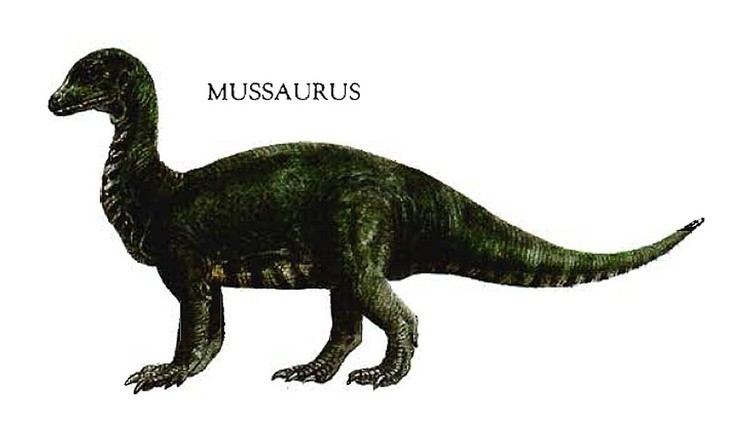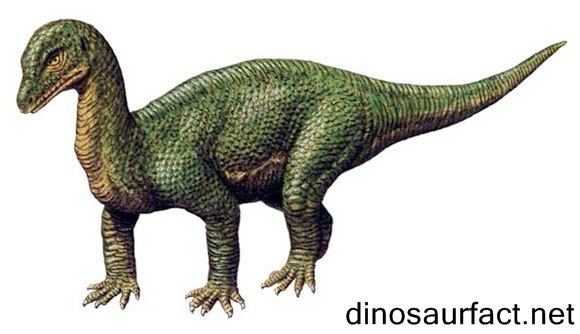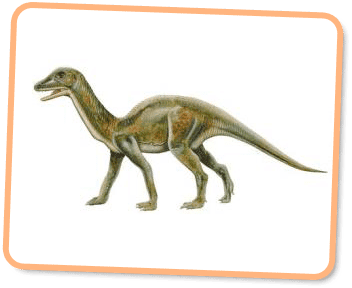Higher classification Mussauridae | Phylum Chordata Scientific name Mussaurus Rank Genus | |
 | ||
Family †MussauridaeBonaparte & Vince, 1979 Similar | ||
A tribute to mussaurus
Mussaurus (meaning "mouse lizard") is a genus of herbivorous sauropodomorph dinosaur that lived in southern Argentina during the Late Triassic, about 215 million years ago. It receives its name from the small size of the skeletons of juvenile and infant individuals, which were once the only known specimens of the genus. However, since Mussaurus is now known from adult specimens, the name is something of a misnomer; adults possibly reached 3 m (10 ft) in length, and weighed 70 kilograms (150 lb). Mussaurus possesses anatomical features suggesting a close, possibly transitional evolutionary relationship with true sauropods.
Contents

Discovery

Infant and juvenile fossils of Mussaurus were first discovered by an expedition led by Jose Bonaparte during the 1970s to the El Tranquilo Formation. There the team found fossilized eggs and hatchlings, which added insight into the reproductive strategies of Mussaurus and other sauropodomorph dinosaurs. The first adult specimens of Mussaurus were described in 2013. Some of these specimens had first been described in 1980 and were originally attributed to the genus Plateosaurus.
Phylogeny

Previous to the discovery of adult specimens of Mussaurus, the phylogenetic position of this taxon was difficult to establish. Infant and juvenile fossils are known to show more basal traits than adult specimens of the same taxon. Furthermore, the recently discovered one subadult and three adult specimens assigned to Mussaurus are more complete than other material assigned to it. Therefore, a cladistic analysis of basal sauropodomorphs performed by Otero and Pol (2013) to test the phylogenetic relationships of Mussaurus, included information only from adult specimens. The following cladogram is simplified after their analysis (relationships outside Plateosauria are not shown).
Reproduction

Mussaurus specimens have been found in association with nests that are believed to contain multiple eggs apiece. The skeletons of Mussaurus infants were small, only six inches long excluding the tail, but a total of 20 to 37 centimetres (7.9 to 14.6 in) long. This is about the size of a small lizard. Juveniles differed from adults in proportion in addition to size and mass. As is common for dinosaurs, juvenile Mussaurus had tall skulls with short snouts and large eyes.
These proportions are common in many infant vertebrates and are often associated with species that parental care during the vulnerable early stages of life. Adults are expected to have longer snouts and necks, as typical in early sauropodomorphs.
